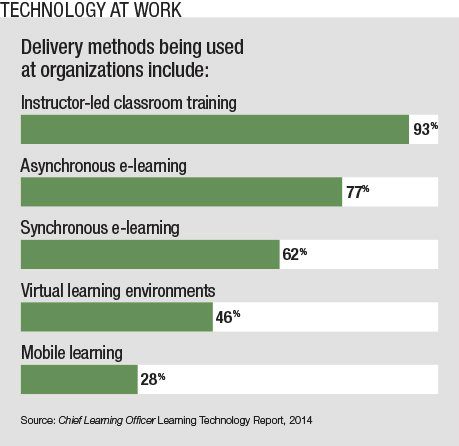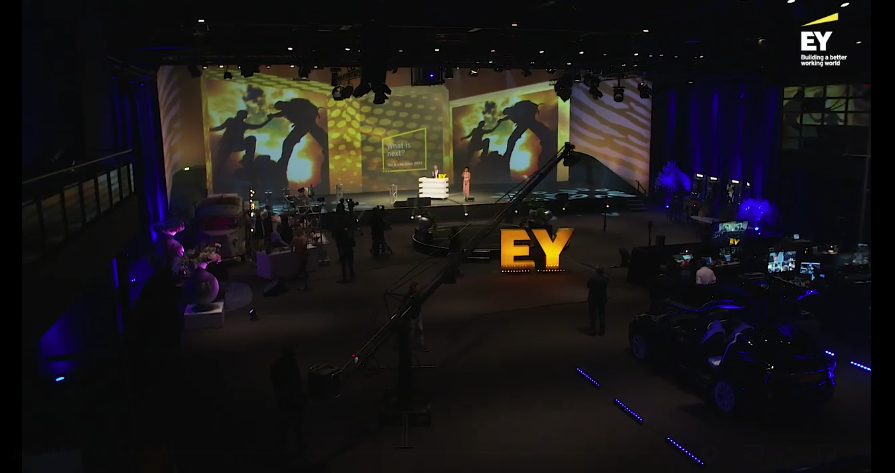Learning professionals are often the first to admit that when it comes to technology, they love the idea of the newest shiny product. But successfully implementing the latest toys for mobile learning, video streaming and social collaboration may be another thing altogether.
Practitioners and vendors alike say even the best thought-out rollouts can have problems, including getting employees to actually use the tools. And sometimes the latest fad can be just that — a passing fad.
Take the idea to build an entire curriculum in the online virtual world Second Life, which was all the rage a decade ago, said Rob Lauber, chief learning officer at McDonald’s Corp. “What everyone thought was going to become a cottage industry overnight actually died overnight.”
Even established technologies such as learning management systems are still not being fully used, and most of the reasons why are often out of learning leaders’ control: budget constraints, learning’s low position on information technology’s totem pole, bandwidth issues and inadequate resources to keep up with the necessary data input.
Budget constraints and integrating data from multiple systems still rank as some of learning leaders’ top technology challenges, according to the 2014 Chief Learning Officer Learning Technology Report.
Coming to Grips With Today’s Hottest Trends
Alicia Shevetone, vice president of strategies at Clarity Consultants in Campbell, California, said less than 5 percent of her clients are making a sincere effort to develop mobile learning, partly because they are stymied by budget constraints or they do not understand what it takes to introduce a new technology.
Some get too excited and buy first before doing their homework, said Katherine Guest, co-founder and chief marketing officer of OnPoint Digital Inc., an online and mobile learning company. “We’ve heard learning professionals say that their company just bought hundreds — even thousands — of tablet devices, with no real plan as to what they would install on them, and no thought as to how they might be used to enhance existing learning programs.”
In that sort of situation learning leaders should find out first which, if any, employees are allowed to access proprietary company information on their personal devices, she said. If they have corporate-owned devices, IT may only allow apps from their corporate app store or mobile device management platform.
Some practitioners prefer to get senior leaders excited about technology-related possibilities by developing something tangible before asking for an investment. Leah Minthorn, acting director of North American operations learning at Boston-based Iron Mountain Inc., recently designed a mobile learning app, even though not all workers have company-owned devices and there are security issues with using their own devices.
“I do things backwards, because I think it makes them more apt to approve things,” she said. 
Governmental entities in particular are less inclined to be early adopters because it’s a very slow process to get people comfortable. Kevin Bruny, chief learning officer for Virginia’s Chesterfield County, likened it to turning a steam ship. However, Bruny said in his situation there isn’t much need to roll out mobile learning because most county employees in the field can complete their duties without additional performance support tools.
But that brings up a relevant point. Work tasks, outcomes and infrastructure matter when it comes to technology-motivated learning decisions. For example, Laura Helliwell, senior director of technology for corporate learning at Harvard Business Publishing in Boston, said it’s challenging to develop online content for organizations that still use Microsoft’s Internet Explorer 8, as the older browser doesn’t support content developed using HTML5.
It’s easier getting organizations to use Harvard’s virtual classrooms, but Helliwell said she sometimes has to remind clients to limit sessions to 50 people and use webcams, so participants will be more apt to interact.
Learning leaders also should package new technologies into online and mobile systems that are intuitive and easy for the average learner to understand, so there are no barriers for them to use the new tools, said Robert Gadd, OnPoint’s co-founder and president.
The best way to use new technologies is to identify learning team members to be champions, which includes developing relationships with vendors who can demonstrate new features and functionalities to the rest of the learning organization, said Bill Pelster, a principal at Deloitte Services in Seattle. These team members should “own the implementation,” including providing refreshers when necessary.
Annette Thompson, senior vice president and chief learning officer for Farmers Insurance Group, deploys such team members, who also work in conjunction with designated IT staff to develop a kind of IT road map for implementation, including integration into existing systems.
Thompson said there are also change management issues to consider when adopting new technologies. For example, there may be organizational resistance to adopting social learning tools. Senior leaders may be afraid that employees will use them when they are supposed to be performing other duties, or that YouTube will eat up too much bandwidth.
But she said sometimes her team gets ahead of technology. Several years ago Farmers had “a very painful time” adopting virtual worlds; the team learned it was difficult to design content for the tool and it wasn’t user-friendly. Similarly, Thompson’s team piloted e-readers, but within six months tablets came out and they turned to those instead. The key is to be versatile, she said.
Various learning technologies from different vendors often have overlapping capabilities, so learning leaders must be careful to avoid introducing redundancy during implementation, said Steven Rath Morgan, who is responsible for Xerox Corp.’s global learning process and innovation in Washington, D.C. For example, many learning technologies include social or collaborative learning functionality, which can make it difficult for learners to know how and where to post a video or make a suggestion to improve workflow.
“Employees have an increasingly limited amount of time and attention available,” he said. “Just because a new learning technology can be introduced with new capabilities does not mean it should be if there isn’t clear benefit tied to supporting clear business objectives.”
 Not everyone thinks that technology is ahead of learning. Rory Cameron, senior vice president at Callidus Software Inc. in Pleasanton, California, said there is a massive gap between vision and execution in the learning space, and “it’s the vendors’ fault for not getting them the features they really want fast enough.”
Not everyone thinks that technology is ahead of learning. Rory Cameron, senior vice president at Callidus Software Inc. in Pleasanton, California, said there is a massive gap between vision and execution in the learning space, and “it’s the vendors’ fault for not getting them the features they really want fast enough.”
He said that could be why most early adopters of mobile learning haven’t been learning leaders, but rather sales leaders who need to quickly push out product information or sales tips to field reps.
Getting Better Mileage From an LMS
Lauber said his former employer, Yum Brands Inc., has a sophisticated LMS, but many of its Taco Bell and KFC stores around the world have no Internet connection to access the system. Consequently, his team had to call managers to learn how training programs were executed at those stores. Then, if the team had time, they would input the information into the LMS to get better aggregate data.
Iron Mountain’s newly acquired South American operations want to use the North American organization’s LMS, but the company has had IT integration issues, Minthorn said. There also have been limitations with Internet connectivity within its U.S. operations, as some records centers and transportation hubs don’t have enough bandwidth for workers to watch streaming videos within the LMS.
Further, it can be cumbersome to load an LMS with the latest learning tools, Harvard’s Helliwell said. It’s a process often managed by IT departments that might not have the time if there are other, more mission-critical priorities. As such, Harvard hosts content for clients upon request, and will send metrics to any client’s LMS.
Deloitte’s Pelster said it’s not uncommon for learning organizations not to take full advantage of the features and functionalities in the products they buy — even those that have been in the market for years. “Many times internal talent and learning organizations are so busy taking care of others, they don’t upskill themselves,” he said.
Rocky Mitarai, senior product marketing manager at Adobe Systems Inc. in San Jose, California, agreed. He said many trainers are used to less-interactive Web conferencing tools, so sometimes they don’t understand how to use some of Adobe Connect’s interactive tools to enhance the product’s virtual classes. Some features enable trainers to queue up before their sessions as many slide decks, videos, white boards, chat windows, polls and webcams as they want, to boost the learners’ interest. But many trainers are not used to doing this or have only been shown the features once and may not be comfortable using them on their own.
“One of the biggest problems with running a virtual class is keeping people engaged, and if a trainer is trying to load content or set up activities on the fly, they are going to lose people,” Mitarai said.
Further, many trainers don’t realize they don’t have to schedule new virtual classes each time or reload all of their content ahead of each session. If employees express dissatisfaction with training, learning leaders should investigate whether trainers are using all of the interactive tools available.
Then there are learning organizations that get stuck using older versions of learning systems because it’s a lower priority for IT, who are also running the corporate infrastructure and other mission-critical systems, said Tim Hildreth, vice president of product management at Skillsoft Corp., an e-learning company. As a result, features and capabilities of the latest LMS versions are not available. Being low on the IT totem pole also can affect bandwidth, particularly if more time-sensitive functions need to be handled first, such as a bank needing to process transaction data for customers in real time.
Some learning leaders inherit sub-par platforms, such as Stacy Henry, who in March joined Bridgestone Corp. as director of education and development for its retail operations. Bridgestone has an LMS dedicated to retail operations that customer service reps in stores access through point-of-sale terminals on the front counters. As customers come and go, they have to repeatedly get in and out of learning modules.
Henry said she had to convince leaders to invest in dedicated learning terminals, which will be installed over the next year in the non-customer-facing areas of the stores. “By showing the teammates that we are listening — taking education away from the POS terminal — we are showing them that we are investing in them,” she said.
Chesterfield County, Virginia, doesn’t have an LMS; it’s not a priority that warrants spending taxpayer money, Bruny said. He said his team has made do using Training Register, a database that allows employees to register for classes, creates classroom rosters and transcripts for employees documenting completed classes. A separate system is used to host online courses and performance support tools. “We’ve made our system dance in many ways — maximizing and pushing it to get the data we need,” Bruny said.
Technological tools often work best if they’re paired with other active forms of learning. For instance, it’s not enough just to watch a video; the learning organization has to ensure viewers also practice what they’ve learned to get results.
Indeed, technology tools will fail if they don’t ultimately help learners do their jobs better, said Kathy Leck, vice president of corporate learning solutions at Lake Forest Graduate School of Management in Lake Forest, Illinois. “Technology can make training faster, more accessible, more entertaining, but at the end of the day, if technology is not helping the learning organization meet its goals, it’s not accomplishing what it needs to do.”
















